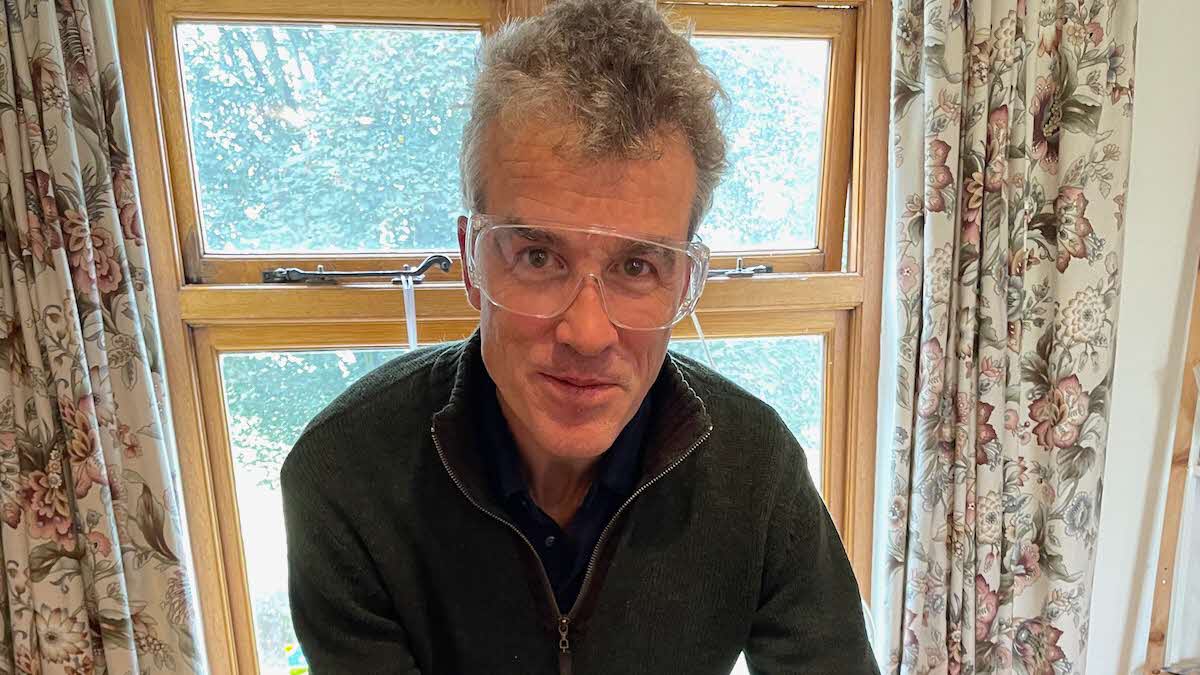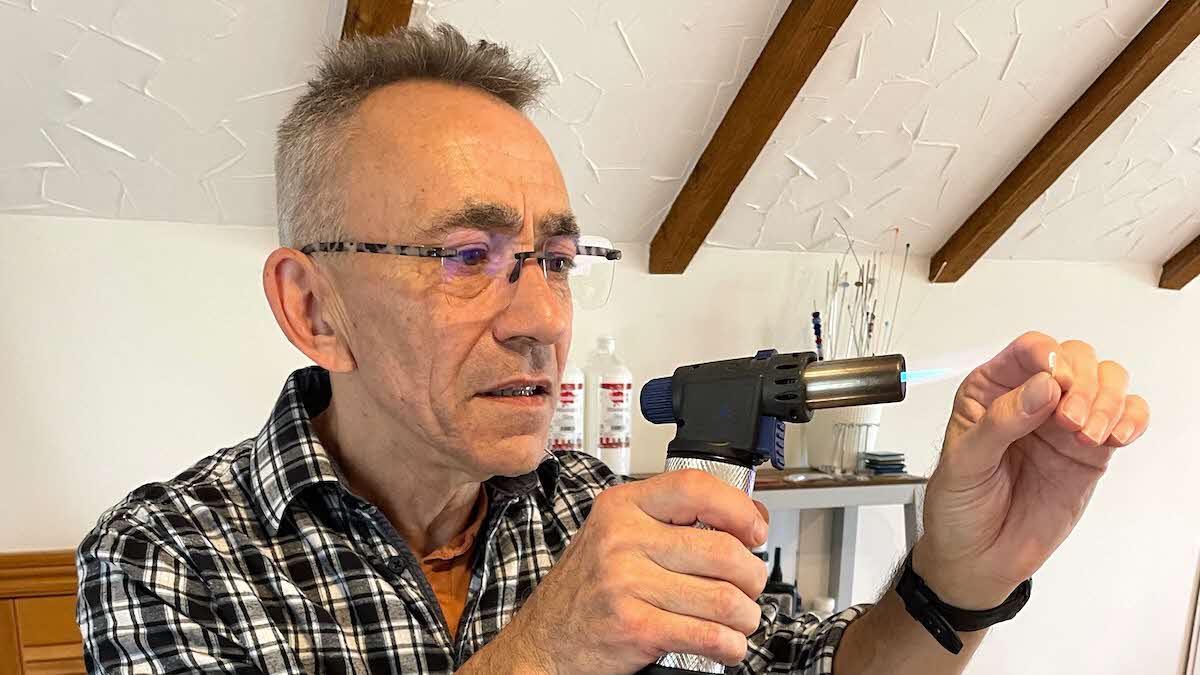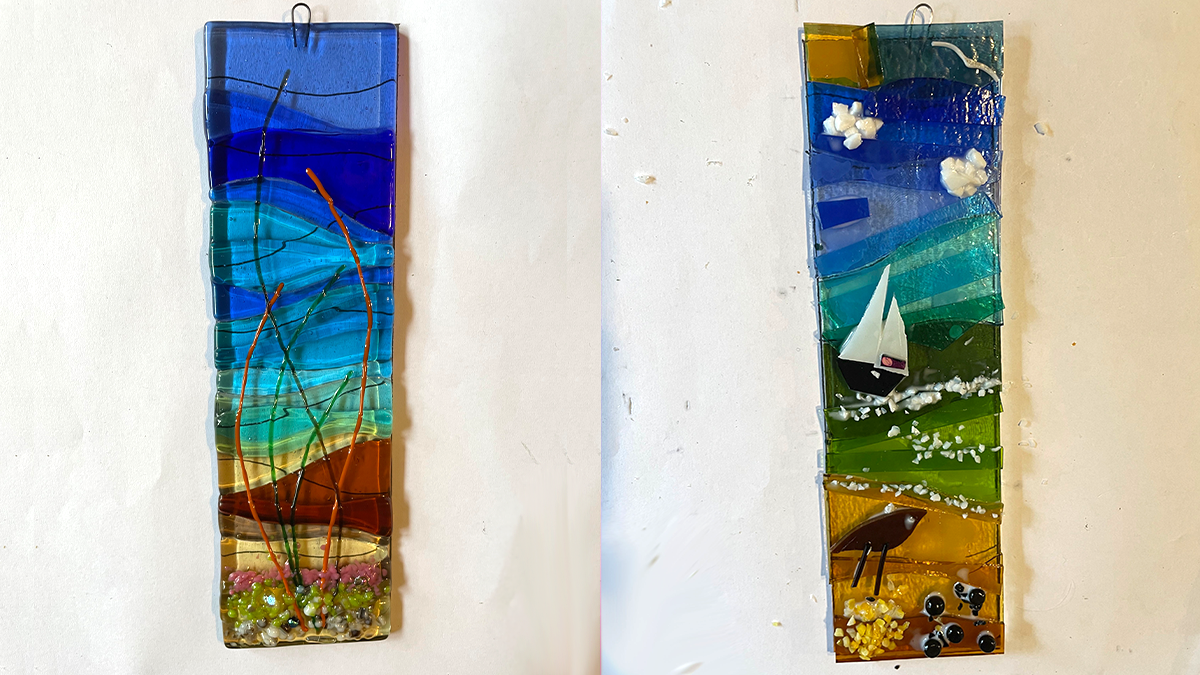Save on days out
Members receive great savings at attractions throughout the UK and Ireland with our Great Savings Guide
Start savingJonathan Manning learns a new skill and makes a fantastic souvenir of a favourite touring destination
 Jonathan at work
Jonathan at work
Finding the ideal souvenir on your travels can be tricky. There are mugs, fridge magnets and key rings, of course, but they’re often generic and mass produced. Fine if your memories are the same as every other holidaymaker’s, but what if your experiences are different? What if the coasters and tea towels can’t get close to capturing the deep blue of the sky, pewter of the mountains or swirling sea greens that linger in your mind’s eye?
If you want a keepsake that reflects how you personally feel about a destination, the only option is to make it yourself. Create the design and select the colours that match your memories.
All of which brings me to North Norfolk Stained Glass, about seven miles inland from the Club’s two campsites in Cromer. I’ve spent at least a week along the North Norfolk coastline every year for the past three decades. I’ve walked the beaches, birdwatched and barbecued, and even braved a Boxing Day swim (once!).
Yet in all that time I’ve never spotted a picture, photo or postcard that encapsulates what this coastline means to me. No identity parade of mugs, plates or painted driftwood has ever stopped me in my tracks with its depiction of this extraordinary seascape. So, I’ve decided to make a souvenir myself.
Despite the workshop’s name, I won’t be working with lead or soldering. Today’s class is all about ‘fused glass’, a one-day beginner’s course in making a piece of wall or window art. The plan is to learn how to cut glass, before assembling the pieces into a layered collage, which will be ‘fused’ in a kiln.
Fused glass is more impressionistic than photorealism – it blends colours and blurs edges. If all goes well, my masterpiece will be an amalgam of North Norfolk’s real colours and light.
I don’t want to make a glass advert of white sand, aquamarine sea and flawless sky. Somehow, I want to portray a spectrum of caramel sands and ivy green seas, below a sky with scudding clouds.
First, though, the basics. Instructor Paul Yates’ safety briefing is serious yet light – glass is sharp and its shards are dangerous, so we (there are four us, of varying standard, taking the course) all put on safety goggles. Paul has an answer to all our questions, happy to divert from his lesson plan to demonstrate how to cut perfect circles or create silhouettes of hares.
 Glass fusing instructor Paul Yates
Glass fusing instructor Paul Yates
We start with the technique for cutting glass in a straight line, holding a cutter like a pen and drawing it towards us along the edge of a set square. The cutter leaves only the slightest of scratches, yet, when we squeeze the glass with breaking pliers it snaps neatly along the score line.
“It should snap like breaking off a Kit Kat finger,” says Paul.
We’re practising on small tiles of 3mm thick greenhouse glass, which costs about £30 per square metre. Hand-blown, stained glass for church windows can cost £500 to £700 per sq m, depending on colours. Hot (yellow, red etc) colours cost more due to the metals, including gold, that give them their hues. Fortunately, fused glasswork like this does not require much material and off-cuts work brilliantly.
Having shredded our panes into ever narrower slices as our technique improves, we move onto curved lines. These are a two-handed affair, two fingers directing the cutting wheel along lines either drawn with felt tip on the glass or marked on a template below. My first attempt resembles a primary school student’s ‘S’, with wonky bends, but after a few attempts the curves become more even and the glass strips get narrower.
Basic skills mastered, it’s time to choose colours for our artwork from a palette of glass pieces that resembles a DIY’s stores paint chart. I grab a handful of different yellows, browns, greens and blues, and start to cut out shapes. Each is the same width, cut to the dimensions of the transparent base layer below, and I attempt to tesselate the curved sides as much as possible.
Second and even third layers of glass follow, sometimes doubling down on the same colour, at other times blending shades in the same way an artist might mix oil paints. The sand is a variety of beiges, the sea a swirl of olive capped with white horses, the sky a series of graduated blues.
But I want features, too. A wading bird cut from a single piece of brown glass (Paul helps me smooth the shape on a grinder), its legs fashioned from stringers – glass the dimensions of cocktail sticks. A pile of pebbles follows, created with a few glass beads (called cabochons) carefully placed with tweezers.
Finally, I attempt to make a yacht bobbing on the waves. The sails are too big for the hull, but I console myself that this is meant to be impressionistic, not realistic, and at least the triangular sails are instantly recognisable.
It’s sorely tempting to keep adding more glass and additional features, but I resist the urge to clutter the image. One of the things I love most about North Norfolk is the sense of space on its endless beaches below vast skies. Stepping back from the workbench, I relinquish my design to the kiln, where the temperature will rise steadily to 760ºC, before ‘cooling’ to 482ºC for about 90 minutes.
Five days later, I tear bubblewrap from a parcel and hold my glass art to the light. It’s spellbinding. Beauty being in the eye of the beholder, this is the beauty I see in North Norfolk. The colours match my memories, the impression faithful to my recollections of the area. And without doubt, it’s the first and only art I have ever created that looks truly professional. It’s a perfect souvenir.
 Jonathan’s design on the right before it went into the kiln
Jonathan’s design on the right before it went into the kiln
A one-day fused glass course at North Norfolk Stained Glass costs £65.
Info: craftcourses.com
Stay: Incleboro Fields Club Campsite or Seacroft Club Campsite
Three more locations that offer glass courses near Club campsites...
The Glasshouse, Tyne and Wear
Choose from a variety of glass courses and make a frit panel, fused glass curve or even Christmas decorations.
Price: from £36
Info: glasshousestudio.co.uk; 0191 272 8666
Stay: Old Hartley Club Campsite
Cheshire School of Glass, Cheshire
Try a two-hour glass fusing taster course or one-day course learning how to cut, shape and assemble glass.
Price: £70 (taster course), £190 (one-day course)
Info: cheshireschoolofglass.co.uk; 07950 004452
Stay: Chester Fairoaks Club Campsite
Crosstree Glass, Devon
A half-day workshop will tackle how to cut a straight line, a curve and an ‘s’ shape, before letting you design your masterpiece.
Price: from £45
Info: crosstreeglass.co.uk; 01271 813228
Stay: Ilfracombe Club Campsite